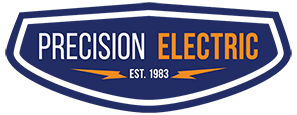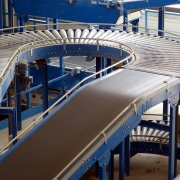How Will VFDs Alter Motor Efficiency (Pt. 2)
/in FAQ VFDs/by Sean FlynnIn the past article, we have established that VFDs are useful in applications where the load needs to be driven at various speed. Weve also seen the ease of how VFDs can be integrated into existing control system. But how do you maximize your investment on a VFD in the long run? This article offers useful hints.
Getting The Best Out Of Your VFD
It is pointless to drive a motor that is constantly running at 100% of its operating speed with a VFD. You will only get significant energy savings when the motor is operating at less than its maximum capacity. A VFD can reduce the speed of a pump or fan and opens a valve or damper with a lesser change in pressure.
A VFD does not suffer from hysteresis and outperforms valves and dampers in accuracy and repeatability. Besides that, it also minimizes wear on valves, dampers ducts, and pipes. The lifespan of rotators are increased as using a VFD creates less strain during start. Switchgear also does not suffer from unnecessary burden as the VFD draws minimal current when powered up.
With all considerations in place, it usually takes less than two years to have the savings in cost justifying the purchase of a VFD. A bigger motor usually means larger savings is achieved. Youll typically get great savings when integrating a VFD to a pump, although you need to ensure that the applications that are used do not require them to run at high speed.
Mixers and agitators can also benefit greatly from a VFD. Besides minimizing power consumption, a VFD provides better control in the mixing process. A conveyor system that needs its speed to be varied is also best fitted with a VFD.
Youll also want to take account of the use rate of the system itself. For example, a 50-hp motor that operates without stopping will consume more energy than a 100-HP that only runs for 8 hours on weekdays only. Assuming that both run at a reduced speed, the former one will benefit the most from a VFD.
Durability Of The VFD
As with any electronic product, the VFD is bound to fail eventually. Comparatively, VFDs have shorter shelf lives than soft starters. You may want to factor in the cost of removal, troubleshooting, and installation to reflect a better figure of the total savings in terms of money. If it fails after its warranty period, the repair cost shall be included as well.
The most common cause of VFD failures is the dc bus filtering electrolytic capacitors. This usually happens when the VFD is idling for a couple of years and it affects the electrolytes of the capacitor. To be safe in any situation, keep a VFD as a spare that hasnt be used for years, and get the capacitors replaced.
Its clear that installing a VFD on the right motor greatly increases its energy efficiency. With VFDs coming in different sizes and shapes, it is best to consult an experienced system integrator to know what best fits your application.
Have any questions? Contact us today and our staff will be ready to assist you!
How To Change An AC Motors Minimum And Maximum Speed
/in SMVector Series, Training Videos/by Sean FlynnHow To Address DC Bus Faults And Dynamic Braking Modules
/in SMVector Series, Training Videos/by Sean FlynnHow To Calculate And Set Motor Overload In The SMV Variable Frequency Drive VFD
/in SMVector Series, Training Videos/by Sean FlynnHow To Forward And Reverse An AC Motor With The SMV VFD
/in SMVector Series, Training Videos/by Sean FlynnHow Will VFDs Alter Motor Efficiency (Pt. 1)
/in FAQ VFDs/by Sean FlynnWhen youre operating motor based equipment, energy efficiency has always been a concern, especially when calls for a greener environment are getting louder. If youve yet to explore the option of adding a Variable Frequency Drive (VFD), perhaps you should start doing so, especially after understanding the benefits of doing so.
Maximize Energy Saving With Variable Speed
As the name implies, a VFD is a device that controls the speed of an AC motor. A VFD is particularly useful in any application that requires the load to be operated at various speeds. With that said, any substantial energy-saving is only significant when youre not operating above 80% speed all the time.
A great example of a VFD application is the supply and exhaust fans of air handlers. Conventional methods use a damper operator to vary the air flow by opening and closing the damper operator. As the speed of the fan remains at full speed, this method is barely efficient. A VFD changes that by controlling the speed of the fan itself.
You can save a lot of energy with applications that see great variations in the motor speed. Applications that can benefit from VFDs are typically conveyors, mixers, fans, pumps, elevators and coordinated drives.
If youre running a motor at a fixed speed at all times, you may want to be cautious of not oversizing your motor. Aside from real power, a motor also draws reactive power to operate and this can affect the power factor, resulting in higher utility cost. The ideal design is to have the motor running near its rated load at the rated speed.
Integrating VFD With PLCs And Controllers
Getting a VFD integrated into a control system should not be a great concern these days. Newer PLCs and controllers feature Ethernet network that allows VFD to be connected directly. This allows the VFD to control the start/stop, forward/reverse and the set point of the motor. In case youre trying to integrate the VFD to an older motor drive where communication port is non-existence, you can easily hardwire the PLC output to the drives input to achieve the same functionality.
There are a couple of design concerns that you may want to pay attention to when it comes to VFDs. Youll want to be careful of regenerative energy that coupled back to the AC line created by overhauling load. Adding a dynamic braking resistor across the BRK+ and BRK- terminal will absorb the excess energy in a safe manner.
In applications that require your motor to run much at a much higher frequency than its specified rating, the motor will draw more current to stay at the correct speed. This happens because the available torque is dropping off while the horsepower remains constant. Extra precautions may be needed when determining your motor and drive in such situation.
We have more in-depth guides and tips in the second part of this article that you may not want to miss out on. Stay tuned and check it out before making your decision with a VFD.
Have any questions? Contact us today and our staff will be ready to assist you!
Running A Sample AC Motor With SMV Keypad On Default Settings
/in SMVector Series, Training Videos/by Sean FlynnShould I Use Fuses Or A Breaker On Variable Frequency Drives (VFDs)?
/in SMVector Series, Training Videos/by Sean FlynnProper Fuse Breaker And Wire Sizing For The SMV Variable Frequency Drive (VFD)
/in SMVector Series, Training Videos/by Sean FlynnSearch Site:
Search Products:
Facility Location:
Free Ground Shipping on Drives And Softstarters Over $300
*Cart total must exceed $300 before taxes. Some product exclusions may apply, discount is applied automatically in the cart during checkout. For remote ‘limited access’ or Residential addresses that require special lift gate services, additional fees may apply. Please specify special shipping circumstances to avoid or limit these charges.
From The Blog:
- Invertek OptiDrive E3 Training Lesson 4: Basic Start Stop Switch Control Wiring & Programming – VFDs
- Invertek Optidrive E3 Training Lesson 3: Basic Speed Potentiometer Wiring & Setup – VFDs
- Invertek OptiDrive E3 Training Lesson 2: Basic Parameter Programming & Startup – VFDs
- Invertek OptiDrive E3 Training Lesson 1: Basic Input Voltage & Motor Wiring – VFDs
- Download: SJ-P1 CAD Drawings







